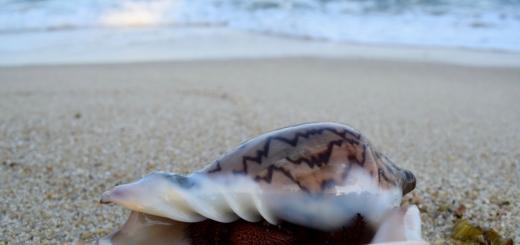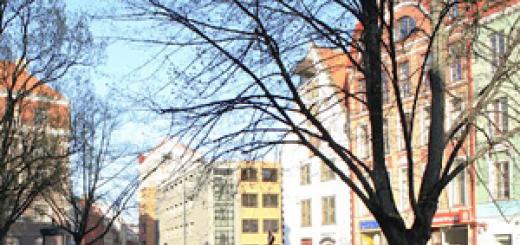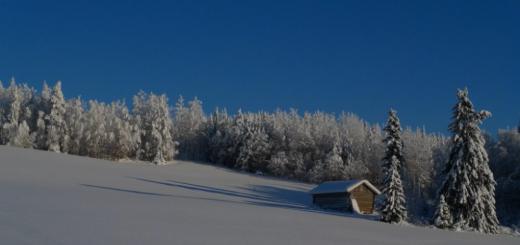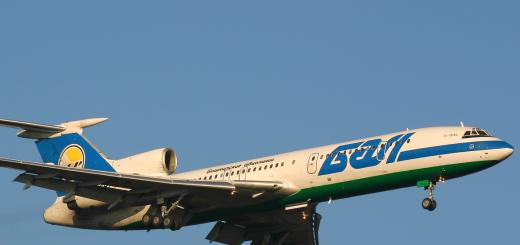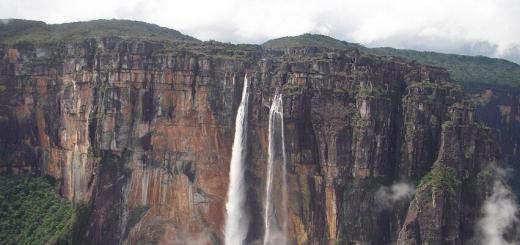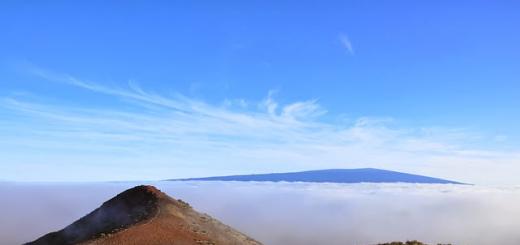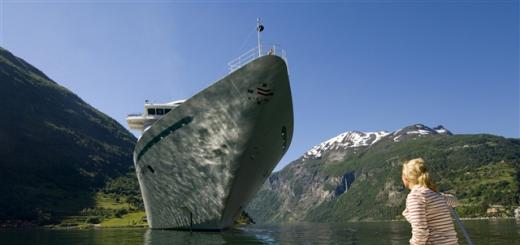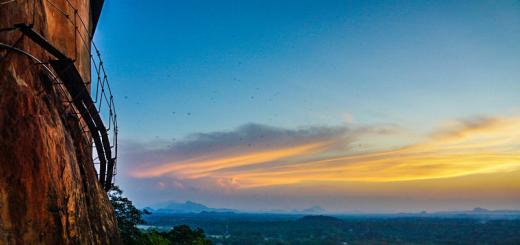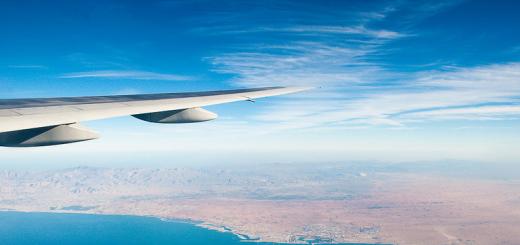The subjugation of the western part of the island of New Guinea by Holland began at the end of the 19th century. By the middle of the XX century. this territory was completely controlled by the Dutch and was included, along with the islands of the Indonesian archipelago, in the colonial possession of the Netherlands India. After the proclamation of Indonesia's independence on August 17, 1945 and the recognition of its sovereignty by the Netherlands in 1949, the western part of New Guinea did not become part of the Indonesian state and remained a colony of Holland. The Indonesian governments launched a struggle for the liberation of West Irian (Irian is the Indonesian name for New Guinea) and its annexation to the Republic of Indonesia on the grounds that an independent Indonesian state should cover the entire former Dutch colony of Netherlands India, and, consequently, the western part of New Guinea. The problem of liberating this territory from colonial status and its further fate were brought up for discussion by the UN. However, since 1961, its Papuan population also joined the struggle for the freedom of this territory. In 1963, by a UN decision, the western part of New Guinea was annexed to the Republic of Indonesia as the West Irian province, later renamed Irian Jaya province. But part of the Papuan population continued to fight for independence, now against the Indonesian authorities. In 1964, the separatist Organization for Free Papua (OPM) was created. In 1969, at the initiative of the UN, a referendum was held in West Irian, according to the official results of which the population of the province spoke in favor of the final incorporation of the province into the Republic of Indonesia. Nevertheless, the separatists continued their struggle, substantiating their demand for independence by claiming that the results of the 1969 referendum had been falsified. The OPM numbered from 30 to 50 thousand people. The main reasons for the dissatisfaction of the population are socio-economic. Irian Jaya province remained the least developed and least controlled area of the country. On a huge territory of 422 thousand square meters. km, covered with rugged forests, swamps and numerous mountain ranges, is home to less than 2 million people, mostly Papuan tribes belonging to the Negroid race, speaking different dialects and often at odds with each other. Many tribes remain at the level of the primitive communal system with the remnants of cannibalism.
During the reign of the military-bureaucratic regime of President Suharto, foreign capital poured into the province in a wide flow, developing the province's enormous natural wealth. The activities of foreign companies caused serious damage to the natural environment. The standard of living of the population remained the lowest in Indonesia. The inhabitants of the province protested against the seizure of their lands by foreign companies, put forward demands for compensation for damage caused to the natural environment, which is vital for the Papuans, on the development of health care and education.
The second source of discontent was government-encouraged transmigration, i.e. resettlement of residents to West Irian from other densely populated islands of Indonesia. The rate of transmigration increased especially during the reign of Suhar-to. The number of immigrants by 2000, according to various estimates, from 30% to 50% of the province's population. More educated and experienced settlers - representatives of non-indigenous ethnic groups began to occupy the main positions in the economy and infrastructure of the province, while among the local Papuan population they remained high level unemployment, as their low level of education and training made them uncompetitive. Migrants were alien to the local population not only ethnically, but also in confessional terms. Most of the Papuans professed either Christianity or traditional local pagan beliefs, and the migrants were predominantly Muslim. In addition, the visitors carried with them a way of life, traditions and customs that were different from the local ones, which was also considered by the Papuan population as an undermining of their own distinctive culture.
The Suharto government unleashed repression on the rebels, as a result of which about 30 thousand fighters for independence, armed mainly with bows and arrows, were killed, and 20% of civilians forced to flee to the jungle died of starvation. The repression dramatically weakened the forces of the separatists, who acted in disunity and controlled a small area. Their tactics were acts of terror and the taking of hostages, including foreigners, in order to draw the attention of the world community to the Irian problem.
After the resignation of the Suharto government, the Papuan tribal elite began to actively advocate for independence and on November 12, 1999, promulgated the Declaration of Independence of Papua. The new Indonesian authorities put forward the idea of expanding the autonomy of the provinces. In these conditions, a wing in the separatist movement has grown stronger, advocating the peaceful achievement of self-determination of West Irian through negotiations with the Indonesian administration. An agreement was reached on hanging the Papuan flag "Morning Star". However, a peaceful dialogue with the Irian separatists provoked strong opposition in the military circles of Indonesia, which have serious economic interests in this province. The army insisted on armed suppression of the struggle for self-determination, which led to new casualties among the local population. In retaliation for the violence, an angry mob of Irians attacked a displaced settlement in October 2000, killing 30 migrants and shooting an insurgent unit by the Indonesian military. In a number of regions, the Papuans began to attack the workers of logging enterprises, since they consider the forests to be their property. In response to these actions, the military arrested a number of separatist leaders, which, in turn, led to the resumption of scattered armed uprisings and the taking of hostages.
The rebels are pushing for a referendum on the province's self-determination, investigating cases of human rights violations, and guaranteeing "national leadership" for the province. Indonesian President Ab-Durrahman Wahid was unable to resolve these issues due to the opposition of the country's armed forces.
Having come to power in 2001, President Megawati Sukarnoputri, first of all, asked for forgiveness for the arbitrariness of the army in West Irian, promised to develop projects of expanded autonomy for this province, but threatened that in case of disagreement with these plans of the Indonesian authorities on the part of the separatists, she will give the army freedom of action. At the end of 2001, the president announced the introduction, since 2002, of the status of special autonomy in this province, renaming it Papua, with its own anthem and flag. The province should retain 80% of the income from the exploitation of local mineral resources.
However, the separatists did not stop fighting. From time to time in West Irian there are major attacks by armed rebel groups on towns and airfields, government agencies. At the same time, Indonesian servicemen are killed, mosques, schools, police stations are destroyed.
Events in the western part of New Guinea are causing complications in Indonesia's relations with neighboring states - Papua New Guinea(PNG), which occupies the eastern half of the island, as well as Australia. Refugees are sent there and separatists persecuted by the authorities are trying to hide there. In the course of their pursuit, Indonesian patrols often violate the APG border, which provokes protests from the government of this country. In turn, Indonesia is unhappy that the rebels are finding shelter in PNG and Australia and support from non-governmental organizations in these countries. As for the official position of PNG and Australia on the West Irian problem, the representatives of the authorities declare respect for the territorial integrity of the Republic of Indonesia.
The main difficulty of the Irians in the struggle for self-determination lies in the lack of unity among the separatists, disunity among 250 Papuan ethnic groups, as well as the negative attitude of the indigenous people towards the later settlers, who are also now residents of the province and strive to guarantee their rights and freedoms.
Western New Guinea (Irian Jaya, West Irian) - the name of the western part of the island of New Guinea, belonging to Indonesia, which consists of two provinces: Papua and West Irian Jaya. Part of Indonesia in 1969, the west of New Guinea was formerly known as Netherlands New Guinea and West Irian, and in 1973-2000 as Irian Jaya.

The territory of Western New Guinea was annexed by Indonesia in 1969 under the Free Choice Act, the validity of which is not recognized by everyone. In 2003, the Indonesian government announced that the territory of Irian Jaya, which was previously a single province, would be divided into three provinces: Papua, Central Irian Jaya and Western Irian Jaya. However, this decision was met with significant protests among the local population. As a result of the decision of the Supreme Court of Indonesia, the creation of the province of Central Irian Jaya was canceled. Western Irian Jaya was already created by that time (February 6, 2006), but its future is still unclear. On February 7, 2007, it was renamed the Province of West Papua (Papua Barat).

Geography
Western New Guinea in the north it is washed by the waters of the Pacific Ocean, in the west - by the Keram Sea, in the south - by the Arafura Sea, and in the east it is bordered by Papua New Guinea.
Territory of Irian Jaya
- 421,981 sq. km - this is 22% of the entire land area of Indonesia.
Main city- the port of Jayapura.
Flag of Irian Jaya
The province is located south of the equator and is dominated by mountainous terrain. The Maoke Range, which stretches from north to south, divides West Irian into two. Punchak peak height 5030 m is the most high point Indonesia. About 75% of the territory of Irian Jaya is covered with forests, most of which are impenetrable tropical.

Climatepredominantly tropical, humid and hot on the coast; the rainy season lasts from December to March, the dry season from May to October; characteristic slight seasonal fluctuations in temperature. The climate is hot and very humid almost everywhere. Summer temperatures range from +24 ... +32 ° C, in winter +24 ... +28 ° C. In the mountains, the temperature is lower, in some places there are snow fields that never melt. The rains are very heavy, especially in summer, with rainfall from 1300 to 5000 mm per year. Irian Jaya boasts the longest rivers in Indonesia such as Baliem, Memberamo and Tariku. In the southwest, rivers have created large mangrove swamps and tidal forests.

Today, Irian Jaya is considered the most isolated area from the rest of the world. Mangrove swamps make significant parts of the coast impassable, and dense jungle and high mountains(some snow-covered peaks reach a height of 5000 m) completely isolate certain parts of this territory from each other. There are almost no roads and extremely undeveloped air and sea links, as a result of which many remote villages sometimes have to travel for weeks along narrow and dangerous paths.
In part, probably due to its territorial fragmentation, this province is distinguished by an incredible diversity of peoples and cultures. Isolated and highly distinctive local tribes - many of whom have barely surpassed the Stone Age level - speak more than 100 languages that even their neighbors cannot understand.

Irian Jaya is distinguished by an amazing variety of flora and fauna. Ferns, orchids and climbing plants form a living carpet here, intertwining with the overhanging canopy of the rainforest. These dense thickets are home to over 700 bird species, including the huge flightless cassowary and the famous bird of paradise (Paradisea apoda). In forests and in open areas overgrown with grass, marsupials are also found - tree and shrub kangaroos, flying squirrels.

After oil was discovered in western New Guinea half a century ago, a port Sorong city(40 thousand inhabitants) with hotels and bars, where workers from other parts of Indonesia began to arrive. From Sorong, it is easy to get by boat to the Raja Empat Island Reserve, where birds of paradise can be observed in natural conditions.

Jayapura, the administrative center of the province of Irian Jaya and its largest city (50 thousand inhabitants), was founded at one time by the Dutch, who claimed the middle part of the northern coast of New Guinea. To the east of Jayapura, on the shore of the Yos Sudar-so bay, there is nature reserve Jotefa with many beautiful beaches, where you can see the skeletons of several ships that were once sunk during the hostilities at sea. To the east, along the coast of the bay, there is a settlement of the Sepik tribe, famous for the primitivist painting of tree bark and the manufacture of carved ancestral figures. In the eastern suburbs of Jayapura is the Chend Ravasih University building with its magnificent Anthropological Museum. In the exposition of the museum, the most interesting collection of objects material culture Asmat, acquired through a grant from the John D. Rockefeller III Foundation. The figures and weapons presented here by the craftsmen of this tribe are distinguished by absolute harmony and aesthetic perfection and are highly appreciated by connoisseurs of primitivist art. Although the Asmat tribe lives on south coast New Guinea, Jayapura has a specialty shop for Asmat handicrafts.
Irian Jaya - Western New Guinea - is distinguished by an amazing variety of flora and fauna, with extraordinary species that are not found anywhere on Earth. The deepest and longest rivers in Indonesia, also filled with mysterious inhabitants, flow through West Irian.
And this vast land - the west of the huge island of Papua New Guinea, starting from a few kilometers from the coast, still remains a mysterious land - the area of "terra incognita". And first of all, not only because of the inaccessibility ...
Horror and horror in everything and everywhere
Even locals very rarely, for a lot of money, he dares to hire a guide and take researchers to the local humid equatorial forests - the virgin jungle, still marked on the maps: "unexplored zone".
And again, mainly, not because of the natural horrors listed above, but because of the local representatives of our species, homo sapiens. After all, an unusual people live here, stopped in development at the level of the Stone Age.
These intelligent people from the Kukoko, Yali and Asmat tribes are cannibalistic Papuans, hunters for human heads. They never succeed in civilizing them, all attempts to civilize this people, or at least their representatives, ended in the best case - to no avail, and in most attempts - in failure. "
Even today, when humanity is about to explore Mars, New Guinea is as full of mysteries as centuries ago, - points out the researcher of exotic tribes - very knowledgeable person- Roy Berser. “There is a real terra incognita here. And for many more decades, Irian Jaya will remain an unexplored corner, which is distinguished by a murderous environment for everyone except the Papuans and a semi-savage population that is not amenable to civilization, practicing cannibalism and the most terrible bloody orgies ... "

Underworld in the selva
The Asmat took the life of the young English scientist John Priestley. In the middle of the 20th century, with an expedition and guides, he undertook a journey on pies deep into Irian Jai and sank there forever.
In the same places, already close to our time - in November 1961 - 23-year-old anthropologist Michael Rock-Feller, a representative of the famous clan of American billionaires, died.
A terrible death overtook the missionaries Philippe Masters and Stanley Dale several years later. The Papuans showered them with a hail of arrows, and then lit a huge fire and threw them into the fire while still alive. After frying, they immediately ate and arranged wild dancing over the gnawed bones.
There was also fragmentary information about the deaths of two other missionaries and an entire research expedition, which included three women. And all the little things happened ...
Is it possible to stay alive and get out?
The most bloodthirsty tribes are the Kuku-Koko, Yali and Asmat. These people eat human flesh not only at ritual celebrations or after winning endless wars. If there is such prey, then it will be eaten by them immediately with great joy.
A hundred years ago, they went on a real hunt for people, attacking coastal settlements, drove away prisoners and devoured them after ritual torture.
Kuku-koko gouged out their eyes, cut off the limbs and ripped open the lives of the prisoners. The human-eaters, cleared of the insides of the body, were stuffed with fragrant herbs and sweet potato tubers. Such stuffed human carcasses were baked entirely on coals by cannibals.
Cannibals also often hung prisoners by their legs and cut their throats to release blood. They collected it and drank it as a sign of their military prowess and success.
Only a few researchers still managed not only to visit Irian Jaya, but were even lucky to stay alive and return. In the 1980s, Jack Crosby filmed the terrifying documentary Chronicle of a Green Hell, of course about killing and devouring people.

Among the savage cannibals
And the same Roy Berser wrote in 1999 an amazing book "Cannibals - My Friends", which immediately became a bestseller.
“They noticed us a long time ago and followed us,” the researcher writes. - The temperature in the jungle did not drop below 45 ° C, and the humidity reached 98%. Only the keen eye of our guide Kama discerns the path. But the space is littered with thick branches that cut off the path. The rotten air shuddered from a heartbreaking howl, around from the thickets not even savages appear, but just some devils: naked black creatures, painted with chalk, blood, soot and clay. Devils howl surround us, huge fangs and bones are threaded in their noses and ears, in their hands are the terrible weapons of the primitives - stone axes, huge knives made from the bones of the relict bird of the cassowary. Some have long spears, hanging on to them, hanging by their hair, dried human heads ...
God alone knows that the savages were quick to kill: maybe our submissive appearance or bright gifts thrown out of the ryuk-zak, Berser continues to tell about his horror and luck. - The guide convinces the Papuans that we are harmless and want friendship. We got "friendship". Having led us to the settlement (a dozen huts made of trunks and huge leaves), the Papuans stripped us down to Adam's costumes and painted us with clay, fresh boar blood and whitewash. In the evening darkness, by the light of the fires, it was absolutely impossible to distinguish us from the Papuans ...
Learning to wield a savage weapon was not easy, but interesting. We were shown how to make fire with a chair and a wooden stick, knock down fruits from trees with a bo-merang, and climb palms. I learned the technology of making dried human heads the size of a fist. Bright crystals are inserted instead of eyes - and a creepy fetish is ready! We avoided using a war spear, making human heads; excessive disgust could not make us participate in some rituals ... "

Cannibalism - as a defensive tactic?
Several years ago, a scientist who visited Irian Jaya, Karl Bloss formulated the following theory about cannibals: “Papuan cannibals began to eat a person, not because it is pleasant and tasty, but because it is terrible and disgusting. Not because it pleases the gods, but because ferocity and cruelty strike even idols. Intimidating enemies is the main goal of the cannibalistic cult. Many cases are described when one of the victims managed to escape, having witnessed the terrible death of comrades in unhappiness.
Can anyone really believe that an alien, contrary to the wishes of savages born and living in the jungle, can run away and hide from them ?! The fact is that if he does not run away, then the whole ritual of cannibalism will become meaningless. How then will the world know about the terrible danger that threatens uninvited guests? 2004 - the last case of the death of three travelers from Switzerland, when the fourth managed to "escape", horrified the world community. The territory was declared a special reserve without the right to visit. The cannibal method has worked! "
Scientists write, discuss, argue and put forward new versions ... The Papuan tribes of the Kuku-Koko, Yali and Asmat in Irian Jaya also hunt people and dance around the fires when they are full ...
Irian Jaya is the name of the western part of the island of New Guinea. The area, formerly Dutch New Guinea, was annexed to Indonesia in 1963 after a short but fierce military campaign by President Sukarno.
Today Irian Jaya is considered the most isolated from the rest of the world region. Mangrove swamps make significant parts of the coast impassable, and dense jungles and high mountains (some snow-covered peaks reach heights of 5,000 m) completely isolate certain parts of this territory from each other. There are almost no roads and extremely undeveloped air and sea links, as a result of which many remote villages sometimes have to travel for weeks along narrow and dangerous paths.
In part, probably due to its territorial fragmentation, this province is distinguished by an incredible diversity of peoples and cultures. Isolated and highly distinctive local tribes - many of whom have barely surpassed the Stone Age level - speak more than 100 languages that even their neighbors cannot understand.
Irian Jaya is distinguished by an amazing variety of flora and fauna. Ferns, orchids and climbing plants form a living carpet here, intertwining with the overhanging canopy of the rainforest. These dense thickets are home to over 700 bird species, including the huge flightless cassowary and the famous bird of paradise (Paradisea apoda). In forests and in open areas overgrown with grass, marsupials are also found - tree and shrub kangaroos, flying squirrels.
After oil was discovered half a century ago in western New Guinea, the port city of Sorong (40,000 inhabitants) grew here with hotels and bars, where workers from other parts of Indonesia began to arrive. From Sorong, it is easy to get by boat to the Raja Empat Island Reserve, where birds of paradise can be observed in natural conditions.

Jayapura, the administrative center of the province of Irian Jaya and its largest city (50 thousand inhabitants), was founded at one time by the Dutch, who claimed the middle part of the northern coast of New Guinea. To the east of Jayapura, on the shores of Yos Sudar-so Bay, is the Yotefa Nature Reserve with many beautiful beaches, where you can see the skeletons of several ships that were once sunk during the hostilities at sea. To the east, along the coast of the bay, there is a settlement of the Sepik tribe, famous for the primitivist painting of tree bark and the manufacture of carved ancestral figures. In the eastern suburbs of Jayapura is the Chend Ravasih University building with its magnificent Anthropological Museum. The collection of artifacts from the Asmat tribe acquired with a grant from the John D. Rockefeller III Foundation is the most interesting in the museum's exposition. The figures and weapons presented here by the craftsmen of this tribe are distinguished by absolute harmony and aesthetic perfection and are highly appreciated by connoisseurs of primitivist art. Although the Asmat tribe lives on the southern coast of New Guinea, there is a specialty shop for Asmat handicrafts in Jayapura.
Of the highland regions of the province of Irian Jaya, the most extensive and accessible is the Grand Baliem valley located in its central part - a 72-kilometer stone corridor along which the Baliem River flows. More than 100 thousand people from the Dani tribe live here in small villages scattered throughout this wide valley. You can only get here and get out of here by air. Trails and an ever-increasing number of car tracks connect the center of the Wamenu Valley with the rest of the villages. Don't forget to bring warm clothes, sturdy shoes and a backpack. Porters and guides can be hired from the hotel in Wamena.
Having crossed the river, many tourists make a three-hour hike to the village of Akim, where the local headman shows the mummified body of his deceased grandfather for a small fee.
Eric Oei
Guide: Window to the World, Southeast Asia.
about country
Irian Jaya is a part of the island of New Guinea, which is also called Western New Guinea located on the west coast. The area was previously called Netherlands New Guinea (West Irian), and was annexed to Indonesia in 1969 as a result of an expansion company state border which was undertaken by President Sukarno. Since 1973, West Irian has been named Irian Jaya, which translates as "Victory Irian". And today Irian Jaya is divided into two provinces: Papua and West Papua, which know little about each other's habits and traditions, since they live apart.
The western part of Irian is washed from the north by The Pacific Ocean, in the west - by the Keram Sea, and in the south - by the Arafura Sea, that's why it is here that people find the best dive sites of Irian Jaya... The territory of Irian Jaya is 421,981 square meters, which represents 22% of the total land area of the Indonesian Peninsula. The main city of West Irian is the port of Jayapura. The territory is dominated by mountainous terrain, since Irian Jaya located south of the equator. West Irian is divided into two parts by the ridge of the Maoke Mountains, which stretches over a vast territory from north to south. The highest point in Indonesia is the Punchak peak, whose height is 5,030 m. Almost 75% of the island's territory is covered with forests, most of which are impenetrable tropical thickets.
 Today Irian Jaya the world is considered the most isolated area from the outside world. Perhaps that is why diving, Indonesia for which is the best place, is developed here so widely. Large parts of the coast here are impassable due to mangrove swamps, and high mountains and dense thickets of jungle completely isolate the hotel areas from each other. There are few roads, there is practically no developed sea and air communication, in view of which many residents from distant villages have to make their way along dangerous and narrow paths to find out the news, often for weeks. Due to this territorial fragmentation, the province of Irian Jaya has a huge variety of cultures and peoples. Indonesia, represented by this peninsula, has even isolated and peculiar tribes, which in their development barely survived the Stone Age. The most popular today is the Asmat tribe, who are called "headhunters". It gained its fame in 1961 when Michael Rockefeller, the son of a New York governor, disappeared. All the newspapers of the world then broadcast the sensational news about the missing son of the governor, who went to Irian Jaya in search of the household items of this bloodthirsty tribe.
Today Irian Jaya the world is considered the most isolated area from the outside world. Perhaps that is why diving, Indonesia for which is the best place, is developed here so widely. Large parts of the coast here are impassable due to mangrove swamps, and high mountains and dense thickets of jungle completely isolate the hotel areas from each other. There are few roads, there is practically no developed sea and air communication, in view of which many residents from distant villages have to make their way along dangerous and narrow paths to find out the news, often for weeks. Due to this territorial fragmentation, the province of Irian Jaya has a huge variety of cultures and peoples. Indonesia, represented by this peninsula, has even isolated and peculiar tribes, which in their development barely survived the Stone Age. The most popular today is the Asmat tribe, who are called "headhunters". It gained its fame in 1961 when Michael Rockefeller, the son of a New York governor, disappeared. All the newspapers of the world then broadcast the sensational news about the missing son of the governor, who went to Irian Jaya in search of the household items of this bloodthirsty tribe.
 The least populated area of Indonesia is West Irian, home to 1.56 million inhabitants, which equates to an average population density of 4 people per square kilometer. More than a third of the population lives in rural areas, preferring to exist in small groups. As a rule, all settlements are located on the shores of the sea and in some fertility valleys, but there are people in the provinces of border cities. Irian Jaya- an amazing place: large areas in its province are not inhabited by people at all. The population moves between cities by sea and by air. The main settlements here are Mankovari, Biak, Merauke, Sorong and Jayapura (the population of the latter is almost 150 million people). Jayapura is the administrative center of Irian Jaya, and also the most Big city... It was founded by the Dutch, who laid claim to north coast New Guinea. In the western part of Irian, people communicate in almost 300 different languages of the world, which are so different that neighboring tribes do not understand each other. State language Indonesia is Bahasa Indonesia, which is used as a common language in the peninsula.
The least populated area of Indonesia is West Irian, home to 1.56 million inhabitants, which equates to an average population density of 4 people per square kilometer. More than a third of the population lives in rural areas, preferring to exist in small groups. As a rule, all settlements are located on the shores of the sea and in some fertility valleys, but there are people in the provinces of border cities. Irian Jaya- an amazing place: large areas in its province are not inhabited by people at all. The population moves between cities by sea and by air. The main settlements here are Mankovari, Biak, Merauke, Sorong and Jayapura (the population of the latter is almost 150 million people). Jayapura is the administrative center of Irian Jaya, and also the most Big city... It was founded by the Dutch, who laid claim to north coast New Guinea. In the western part of Irian, people communicate in almost 300 different languages of the world, which are so different that neighboring tribes do not understand each other. State language Indonesia is Bahasa Indonesia, which is used as a common language in the peninsula.
Everything about the climate of the peninsula serves to please tourists. The climate is tropical, hot and humid on the coasts. The rainy season here begins in December and lasts until March; drought lasts from May to October. It is always hot and humid almost everywhere. Indonesia It is distinguished by hot summers, when the air temperature is from +24 to + 32 ° C, and warm winters, with temperatures from +24 to + 28 ° C. The temperature in the mountains is lower, and in some places there is even snow. The rains pouring down on Irian-Jaya are very strong, especially in summer. In addition, there are incredibly long rivers, the main of which are Tariku, Memberamo and Baliem. The mangrove swamps and tidal forests in the southwest are the result of the Indonesian rivers.
 Flora and fauna
Flora and fauna
Western New Guinea it is not for nothing that it is considered a paradise for nature lovers. There is an incredibly huge number of representatives of fauna and flora, striking in their diversity and splendor. Flora Irian Jaya represented by a wide variety of meadows, mountains, bogs and marshes, tidal, tropical, coniferous and deciduous forests, where you can find an abundance of ferns, grasses, lianas, moss, trees and flowers. Among the dense thickets of bushes, here you can see a wide variety of butterflies, more than 720 species of birds, 80 species of the famous birds of paradise. The vertebrates of Indonesia are not much different from Australian animals: here you can see kangaroos and flying squirrels. In the forests you will certainly find turtles, snakes, anteaters, possums, porcupines, rats and bats, marsupial cats and giant lizards. Dive sites of Irian Jaya attract tourists with a varied underwater life, where you can find real wonders of nature.
Off the islands west coast, as well as at the Bay of Birds of Paradise, there are simply stunning coral reefs that leave no one indifferent. Among other explored sites, it is also worth noting the Raja Ampat Islands, Sorong Peninsula, Cape Mankovari, and Biak Island. It is in these places diving, Indonesia for which it has become the main place for such entertainment, it is the most common and deserves the attention of tourists. Indeed, such beauty cannot but attract: here the splendor of coral reefs, and deep-water walls, and real sharks, and the clearest waters, and cave dwellers - all attract diving enthusiasts, offering an unforgettable experience. Even the most sophisticated wreck divers cannot fail to attract sunken divers into the Second world war ships, ships and aircraft. Diving v Irian Jaya- this is exotic, which so attracts all adventure seekers, because it is here that you can see the amazing underwater kingdom and the wealth of marine life. If you wish, you can get there and photograph the remains of planes and warships that found their graves here. What attracts tourists and animal lovers, bird watchers and diving fans here? The answer is extremely simple: the coastlines, delineated by white sands, as well as the clear water of the lagoons of a greenish-bluish color, which are framed by the lush greenery of real rainforests with their bizarre hosts.

